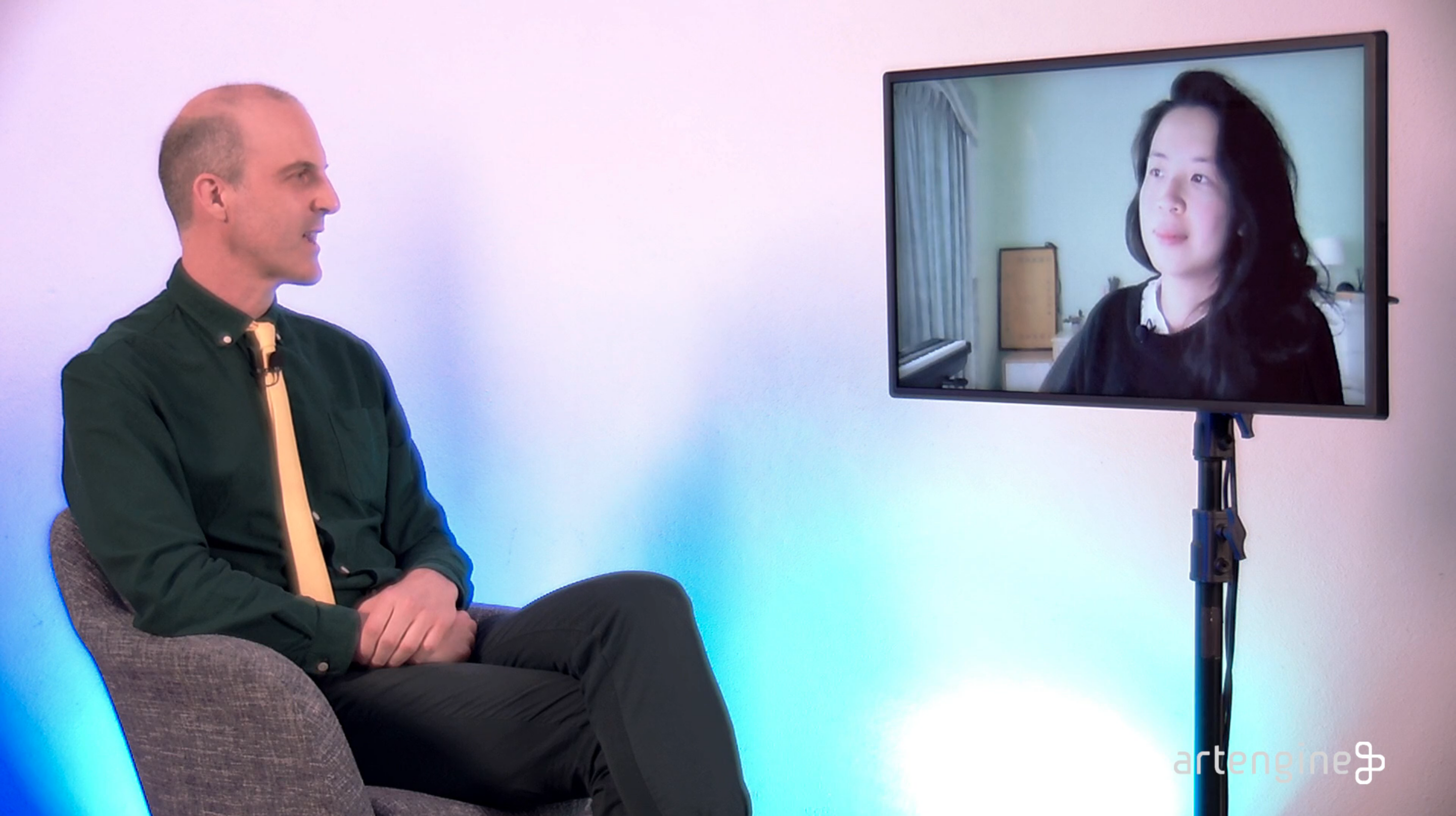As part of our exhibition project, Entanglements, we invited Cheryl to visit the Artengine Studio to provide insight on this brand new work.
This is Part 1 where Cheryl presents the core ideas of her work. In Part 2, Artengine’s Artistic Director, Ryan Stec, have a more in depth conversation about her work, the context of the show, her communication with the eels and the challenges of working in the climate crisis.
Nipawiwin Akikodjiwan: Pimizi ohci is a multi-channel audio video installation about eels, hydroelectric power and the Chaudiere falls or PipeBowl falls. The work involves placing you within the context of the falls as they stand now and consider the near planetary journey of the eels as they gather from across the globe to reproduce in the Great Sargasso Sea.
When we initially invited Cheryl to produce a work for the Entanglements show, she was drawn to the area around Victoria Island partially because of its particular significance to both local and international Indigenous people. She was thinking about Chief Theresa Spence’s hunger strike and the Idle No More movement, but as she began to hear more about the falls and the infrastructure around it she was drawn to another idea.
An eel ladder built into the dam facility on Chaudiere Island is meant to assist the endangered American eel to find its way back up river after its journey to reproduce out in the sea. This notion of a ladder for eels lead L’Hirondelle into a process of creation situating the plight of the eel through her own research and collaboration with an inter-species communicator.
Listen to the talk to here more of L’Hirondelle’s creation process and her collaboration with the eels.
More information
Check out Cheryl’s artist site
Read about the eel and the Sargasso Sea here.
Find out more about The Ottawa River Keepers
Learn more about Idle No More
More about Cheryl L’Hirondelle
Cheryl L’Hirondelle (Cree/Halfbreed; German/Polish) is an interdisciplinary, community-engaged artist, a singer/songwriter and a critical thinker whose family roots are from Papaschase First Nation, amiskwaciy wâskahikan (Edmonton, Alberta) and Kikino Metis Settlement, Alberta. Her work critically investigates and articulates a dynamism of nêhiyawin (Cree worldview) in contemporary time-place with a practice that incorporates Indigenous language(s), audio, video, virtual reality, the olfactory, music and audience/user participation to create immersive environments towards ‘radical inclusion.’
As a songwriter, L’Hirondelle’s focus is on both sharing nêhiyawêwin (Cree language) and Indigenous and contemporary song-forms and personal narrative songwriting as methodologies toward survivance. She has exhibited and performed widely, both nationally and internationally.
L’Hirondelle is the recipient of two imagineNATIVE New Media Awards (2005, 2006), and two Canadian Aboriginal Music Awards (2006, 2007) and most recently a Governor General’s Award for Visual and Media Arts (. She holds a master’s degree in Design from OCAD University’s Inclusive Design program (2015) and is a member of the University’s Indigenous Education Council. She is currently completing a practice-based PhD with SMARTlab/University College Dublin, Ireland. Cheryl is also the CEO of Miyoh Music Inc., an Indigenous niche music publishing company and record label.
And the eels I asked them, I said, do you want me to say pimisi, which is the Anishaabemowin word for eel? And very cleverly, they said why don't you look and see how many human languages have a word for us.

Join us as Macy Siu gives us the lowdown on another development from the Digital Economies Lab – the Offer/Need Machine. In an era where the gig economy has monetized every informal network from ride sharing to pet sitting, the Offer/Need Machine proposes a network of decentralized reciprocity. Pay close attention to when Siu explains the need for an anti-capitalist model and more-than-human design.